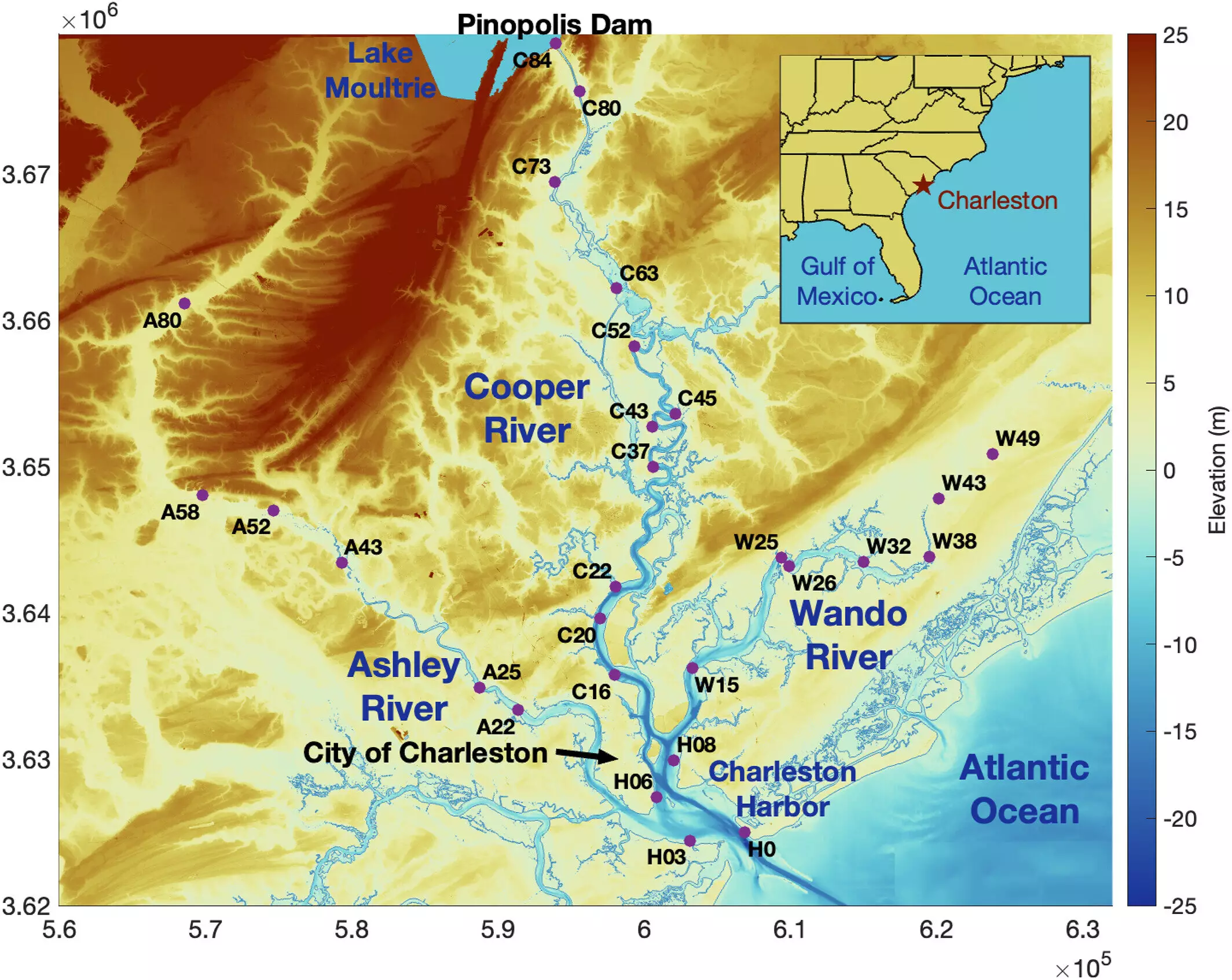In the ongoing battle against climate change, the construction of dams has become a popular strategy to manage flooding along coastlines. However, recent findings suggest that these massive infrastructures may not be the silver bullet they are often deemed to be. A study published in the Journal of Geophysical Research: Oceans reveals that dams, particularly within coastal estuaries—where freshwater from rivers meets the saline waters of oceans—can paradoxically exacerbate flood risks in certain circumstances.
Traditional views hold that building dams alongside rivers and estuaries will naturally lessen the impact of storm surges. Yet, research led by Steven Dykstra from the University of Alaska Fairbanks challenges this assumption. The study has uncovered that the geographical configurations of estuaries, often resembling funnel shapes, can modify the behavior of incoming storm surges. When a dam is introduced, it can shorten the natural flow of an estuary with its barrier, resulting in the reflection and amplification of storm surge waves rather than their reduction. Dykstra likens this phenomenon to the splashes created in a bathtub when waves reach a critical frequency, stating that at certain conditions, the energy of these waves can intensify rather than dissipate.
The implications of these findings stretch far beyond immediate flood mitigation strategies. In analyzing data from Charleston Harbor, South Carolina, which provides over a century’s worth of measurements, researchers were able to project the effects across 23 different estuarine systems globally, ranging from those with existing dams to naturally formed estuaries. The computer models revealed that human infrastructure can influence flooding even many miles inland from the coastal boundaries. In the Charleston area specifically, significant storm surges were recorded over 50 miles inland, suggesting that the localized effects of flooding could surprise many residents who may assume that distance from the coast guarantees safety.
One of the most alarming aspects of this research is the potential for widespread misunderstanding among coastal communities. As Dykstra points out, many individuals living far from the shoreline are not cognizant of their vulnerability to coastal influences. This ignorance is increasingly perilous in light of rising sea levels, which can amplify the risk of catastrophic flooding events reaching well into inland territories. The study serves as a vital reminder that restoration of natural estuarine systems may be necessary to foster more resilient coastal ecosystems capable of absorbing inundation impacts effectively.
This research challenges policymakers and engineers to reconsider the design approach of flood management infrastructures. The dual role of dams in mitigating and exacerbating flooding must be thoroughly examined to implement effective solutions that align with the current reality of climate change. This could involve developing smarter practices that use natural systems alongside or instead of hard infrastructure, such as restoring wetlands and marshes which inherently possess flood-regulating capabilities.
As climate change continues to pose significant risks to coastal regions across the globe, it is essential that the understanding and implementation of flood management strategies evolve. Dams represent a complex and nuanced component of flood risk, displaying tendencies that can either mitigate or magnify the dangers posed by weather events. By reevaluating the role of these structures in conjunction with natural systems, we might better equip our communities to face the unpredictable challenges wrought by a changing climate.


Leave a Reply